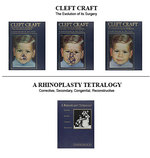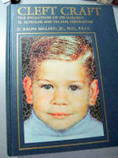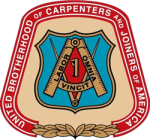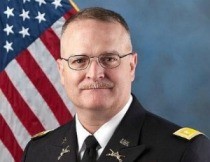D. Ralph Millard, Jr., M.D., FACS, 1919 – 2011
Publications of Dr. Millard at the University of Miami
The Louis Calder Memorial Library of the University of Miami Miller School of Medicine is pleased to make these publications by D. Ralph Millard, Jr. available electronically. Permission to make them available electronically was granted by the copyright holder who also supplied the original OCR files. The Library did not alter the original PDF files. The Library divided the files into individual PDF files that correspond to the individual chapters of each book, created a composite table of contents which serves as a portal to the files, and edited them for the web. The Library created an Inventory of the original manuscripts, photographs and illustrations of these publications in its Special Collections.
Speakers on the tribute to Dr. Millard: Dr. Scott L. Spear MD, Dr. Charles N. Verheyden MD, Dr. Malcolm Z. Roth MD, Dr. John A. Pershing MD, Dr. Kevin C. Chung MD, Dr. Phillip C. Haeck MD
________________________
David Ralph Millard, Jr. (June 4, 1919 – June 19, 2011) was a plastic surgeon who developed
several techniques used in cleft lip and palate surgeries. He was chief of the Division of Plastic Surgery at University of Miami's Miller School of Medicine for 28 years, and maintained a private
practice in Miami.
In 2000, Dr. Millard was nominated as one of 10 "Plastic Surgeons of the Millennium" by the American Society of Plastic Surgeons. In the April 2000 issue of Plastic
Surgery News, Dr. Millard was described as "the most brilliant and creative plastic surgeon we have alive. His work and publications speak for themselves."[1] He is considered to be one of the
founders of modern reconstructive facial surgery...Wikipedia
The D Ralph Millard, Jr., MD Plastic Surgery Society & Education Foundation. The Louis Calder Memorial Library, University of Miami Miller School of Medicine is pleased to make Dr. Millard's publications available electronically. The Library created an Inventory of the original manuscripts, photographs and illustrations of these publications in its Special Collections.
Plastic surgery pioneer D. Ralph Millard Jr., MD, died at age 92.
D. Ralph Millard, Jr. MD, American Association of Plastic Surgeons
____________________________________________________
Bilateral Millard - Landmarks (part 1 of 3) YouTube surgery video
Bilateral Millard - Cutting (part 2 of 3) YouTube surgery video
Bilateral Millard - Suturing (part 3 of
3) YouTube surgery video
D. Ralph Millard, Jr., M.D., FACS 1919 – 2011
American Association of Plastic Surgeons
By S. Anthony Wolfe, M.D.
Ralph Millard died quietly in bed on a Sunday morning, in his condominium in Aventura, Florida, several weeks after his 92nd birthday. With his passing, Plastic Surgery lost one of its greatest innovators, most prolific writers, inspiring educators, and greatest champions for the specialty.
His father was an attorney, and David Ralph Millard, Jr., was born in Barnes Hospital, St. Louis, where he would later return for part of his training with James Barrett Brown. The family, father David, mother Florence, and Ralph, then moved to Asheville, North Carolina, returning to St. Louis only for the births of younger brother Hamilton, and younger sister Florence. Millard graduated from the Asheville School for Boys, an institution he had fond memories of, and made substantial contributions to throughout his life.
He went on to Yale University, where he was on the football and boxing teams, and he remained passionate about these two sports the rest of his life. After graduating from Yale in 1941, he entered the accelerated wartime program at Harvard Medical School, graduating in 1944. At Harvard, the irreverent side of his character emerged. The story persists about a happening in the Physiology Course given by Walter B. Cannon, held in one of the amphitheaters. The exam booklets with their grade were being passed out. Millard received his, reportedly stood up and cried out, "Oh, no, I’m ruined", fired a blank pistol at his head, and slumped over the chair in front of him. Cannon was apparently fazed, but no retribution was taken on Millard.
After Harvard, and an Internship at Boston Children’s Hospital, Millard served in the Navy from 1945-46. After that, he spent a year as Surgical Resident at Vanderbilt University. Beverly Douglas invited Harold Gillies to Vanderbilt, and Millard was able to meet him, and wrangle permission to become a trainee at Gillies’ unit at Rooksdown House in Basingstoke, where he remained from 1948-49. During this first stay in England, Millard visited all of the leading plastic surgeons in the UK such as Kilner, McIndoe, Barron, and Mowlem, and was able to pay a visit to Victor Veau in Paris just a few weeks before his death.
Returning to the United States, Millard finagled a position in Plastic Surgery at Barnes Hospital, where he met Vilray Blair, and , as he mentioned in his autobiography, "Saving Faces" (available for those who are interested from www.MillardSociety.org, along with digitized versions of Millard’s books)), he was "not one of Dr. Brown’s favorite house officers. Millard apparently annoyed Brown enough (by frequently asking why he did not do things the way he had seen Harold Gillies do them) that he found himself without a position after 6 months. He was able to find a fellowship position with Claire Straith in Detroit, from whom he learned a good bit about Rhinoplasty. He still needed another year of training to satisfy the requirements of The American Board of Plastic Surgery, so he spent a final year as the first resident in the program at Baylor.
Having finished his plastic surgical training in the US, in 1952 Millard returned to England to work with the now knighted Sir Harold Gillies. Apparently their book would have never been finished if Millard had not hectored Gillies incessantly. Gillies at that time in his career was more interested in his golf game and his fly fishing, but Millard persevered, and The Principles and Art of Plastic Surgery, a two volume work, was published in 1957 by Little, Brown and Company. Apparently a well-known Boston plastic surgeon had been asked to review the book by the publisher, and stated that "it should never be published and would set plastic surgery back 50 years" because of its often irreverent and jocular tone. Little, Brown and Co. bravely decided to publish the work, and it has become a classic. Millard stayed loyal to Little, Brown, and they published all of his other works (the three volumes of CleftCraft, Principalization of Plastic Surgery, and A Rhinoplasty Tetralogy).
In 1954, Millard got called up for military service a second time, and spent a year in Korea. He reconstructed large numbers of Koreans, both soldiers from North and South, and civilians, and it was at this time that he visualized and performed a new cleft lip repair which he always referred to as "the rotation advancement". With Gillies’ help, Tord Skoog gave Millard 5 minutes to present his paper "Cupid’s Bow Vestige in Harelip" at The First International Congress of Plastic Surgery in Stockholm, in 1955.
Millard’s operation is for unilateral cleft lip repair is probably used by 80% of cleft surgeons around the world, and ranks as his greatest contribution.
Returning to the United States, Millard married Barbara Smith, whom he had met in San Diego before going to Korea. After briefly practicing in Beverly Hills, the Millards moved to Miami in 1956.
Finding himself frozen out of the cleft team by local politics, Millard began making regular trips to the Bahamas and Jamaica, where he continued to improve his rotation advancement procedure. Between 1956 and 1966, Millard published a number of classic papers on cleft lip repair, nasal reconstruction, rhinoplasty, primary mandible reconstruction, and face lifting with in continuity submental lipectomy. He was also a pioneer in breast reconstruction, publishing impressive results with multi-staged tube pedicles from the abdomen.
In 1967, Millard took over the newly opened residency program at The University of Miami on a "temporary" basis, since he was not a geographic, full-time employee. He remained Chief of the Division for the next 25 year, training 176 residents and fellows, of whom an impressive number have become leaders in Plastic Surgery in the United States and abroad (presidencies of The American Association of Plastic Surgeons, The American Society of Plastic and Reconstructive Surgeons (2), The Educational Society of ASPRS, The American Society of Maxillofacial Surgeons ,The International Society of Craniofacial Surgeons (2), Chair of The American Board of Plastic Surgery (2), The European Board of Plastic Surgery, and the European Association of Plastic Surgeons.
Millard himself served as President of The Educational Foundation of ASPRS, and was a Director of The American Board of Plastic Surgery. He received Honorary Fellowships from both the Royal College of Surgeons, Edinburgh, and London.
He was President of The American Association of Plastic Surgeons at its meeting in Coronado, California, in 1985, where his Presidential Address dealt with Principles in Plastic Surgery. In 1996, he received the Clinician of The Year Award of The Association, where he famously scourged the Residency Review Committee "for forcing plastic surgery programs to be cookie-cutter likenesses of each other…where the emphasis on numbers rather than quality is the direct road to mediocrity…"
Millard was an outstanding teacher of plastic surgery because he was an outstanding surgeon. He instilled in his trainees a passion for the specialty, and took his emphasis on Principles to an extreme, where it became a matrix for leading one’s life. He was his own man, and did not care for some of Plastic Surgery’s innovation, such as the Match, which he never participated in. Applying to the Miami Program meant that you would come for a three day visit, where he would have you in his operating room, get an idea of your observational skills, and indeed, character. He would tell you at the end of the visit whether you had the job.
When I was headed off for a further year in Paris with Paul Tessier in 1974, Millard said he might have a need for someone with bone skills, so I returned to join him in the office of 14th Avenue. We collaborated on many patients, but I never really developed quite the close personal relationship with him that I did with Paul Tessier. After being in practice with him for 25 years, I finally asked him for a signed picture. He gave me one, with the inscription, "Tony, Plastic Surgery is not as easy as it seems".
Ralph Millard continued operating until he was 80, and stopped only to look after his beloved wife Barbara in the terminal phase of her lymphoma. After her death, h is family sold the house on Bay Point, and he moved to Houston for a year, where his children Duke, Meleney, and Bond were living. He preferred Miami, so moved back and got a condominium in Aventura, and his son Bond lived nearby.
Retirement was hard for Ralph, since plastic surgery had been his life. And with Barbara gone, he had lost his best friend. I would pay him a visit every 3 or four months, bringing my fellows and the University of Miami residents who wanted to meet him. The dynamic of our relationship changed, and I think he was grateful for my visits.
Ralph lies next to his Barbara in the Woodlawn Cemetery, in Miami. He was one of the true giants of our specialty. May they rest together in peace.
S. Anthony Wolfe, M.D.




































































































































